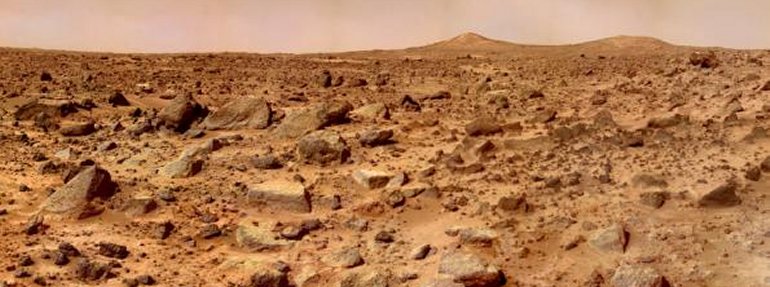
Those of us who were glued to our television sets when NASA shared images of the Martian surface produced by the Mars Pathfinder probe were struck by the resemblance of the landscape to the earth. Even the vivid red coloring of the rocky soil seems familiar to anyone who has been to parts of Australia or even the state of Georgia—though the general landscape, apart from its color, more closely resembles desert New Mexico.
In contrast to Mercury and Venus, which are barely inclined on their axes (in fact, their axes are almost perpendicular to their orbital planes), Mars is inclined at an angle of 25.2 degrees—quite close to the earth’s inclination of 23.5 degrees. And that’s only one similarity. While Mercury and Venus move in ways very different from the earth, Mars moves through space in ways that should seem quite familiar to us. It rotates on its axis once in every 24.6 hours—a little more than an Earth day—and because it is inclined much as the earth is, it also experiences familiar seasonal cycles.
The peculiarities of Mercury and Venus make Mars look more similar to the earth than it really is. Generations have looked to the red planet as a kind of solar system brother, partly believing, partly wishing, partly fearing that life might be found there. But the fact is that life as it exists on Earth cannot exist on the other terrestrial planets.

No comments:
Post a Comment